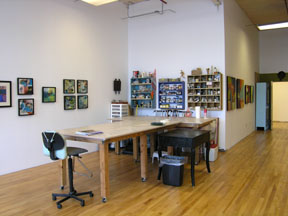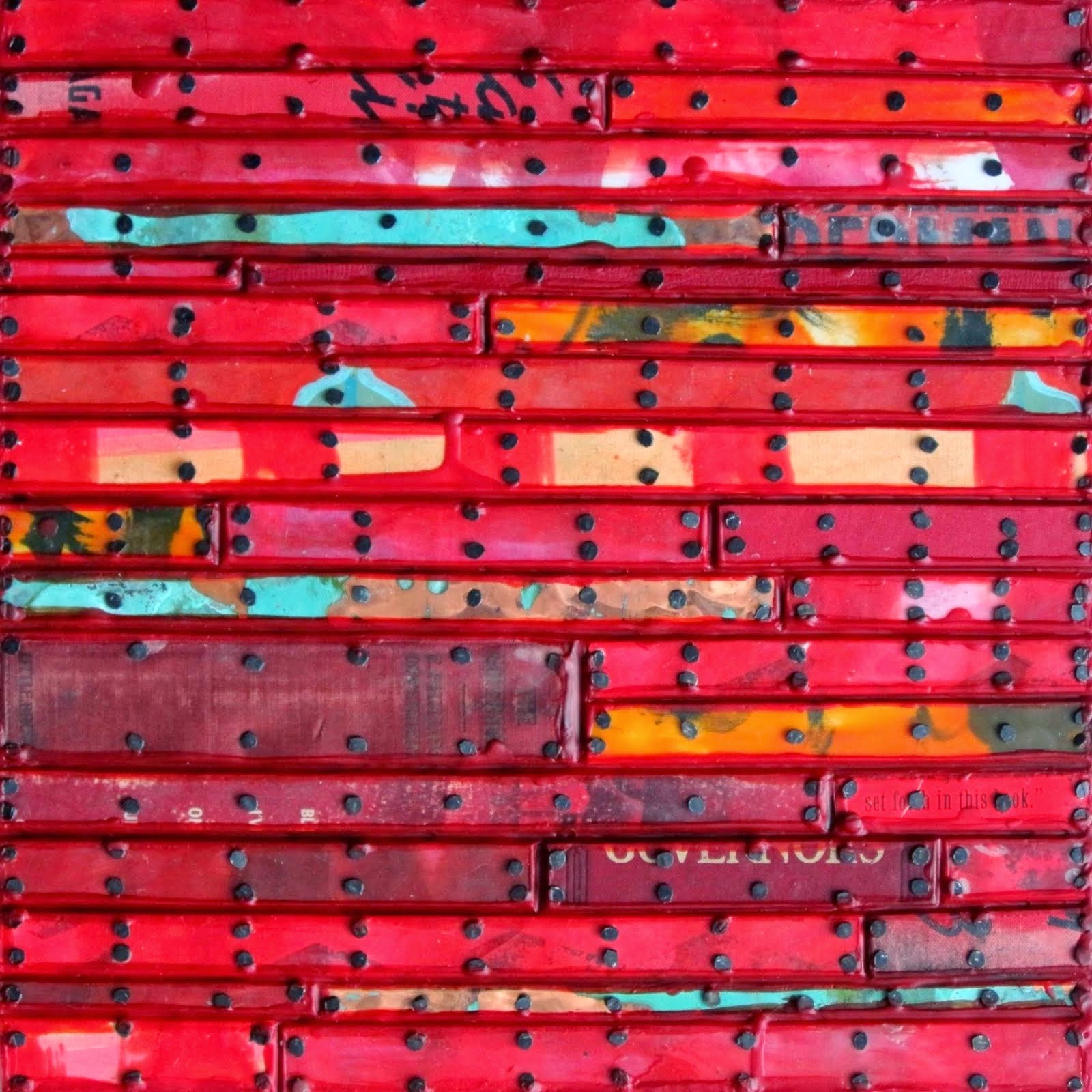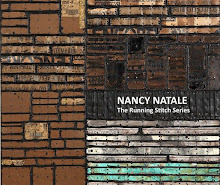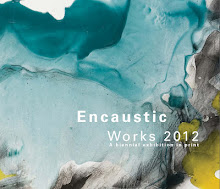

Greg Wright's complex encaustic painting "Current Tendencies", 54" H x 30" W. This image is darker than the painting's real colors and doesn't show the probably 8 million dots of paint that build up its surface.

Craig Bloodgood, Ace Curator.


This view is looking back toward the entry door and shows the work of Jeanne Griffin, Beverly Rippel and Richard Keen on the pedestal.


Continuing along to the back right corner of the gallery, work left to right is Binnie Birstein's "The Fence", Kim Bernard's "Carapace" and three pigment prints with encaustic on paper by Mary Taylor.





Turning around and looking back toward "Chambered Nautilus," we see L to R: "Cross" by Viola Kaumlen, three paintings by Catherine Weber, three collages by Diane Bowie Zaitlin, and four books on the pedestal by Jeanne Borofsky.



Further down the perimeter side are L to R: Binnie Birstein's "Alice", two collages by Diane Bowie Zaitlin, Viola Kaumlen's "Cross." The piece on the floor is "Convolution" by Kim Bernard.




 Turning around and looking back toward "Convolution," we see two paintings by Kimberly Curry on the left and three by Charyl Weissbach on the right.
Turning around and looking back toward "Convolution," we see two paintings by Kimberly Curry on the left and three by Charyl Weissbach on the right.


Two happy artists: Jeanne Griffin and Kimberly Curry.
 That's not to say that there were a slew of bees around, but at least there were some. I felt relieved that all was not over immediately for our buzzy pals.
That's not to say that there were a slew of bees around, but at least there were some. I felt relieved that all was not over immediately for our buzzy pals.
 You have to get right in there and watch for movement to see the bees.
You have to get right in there and watch for movement to see the bees.













 Sandra Sedmak Engel's painting, "Going to Brighton Beach"
Sandra Sedmak Engel's painting, "Going to Brighton Beach"








